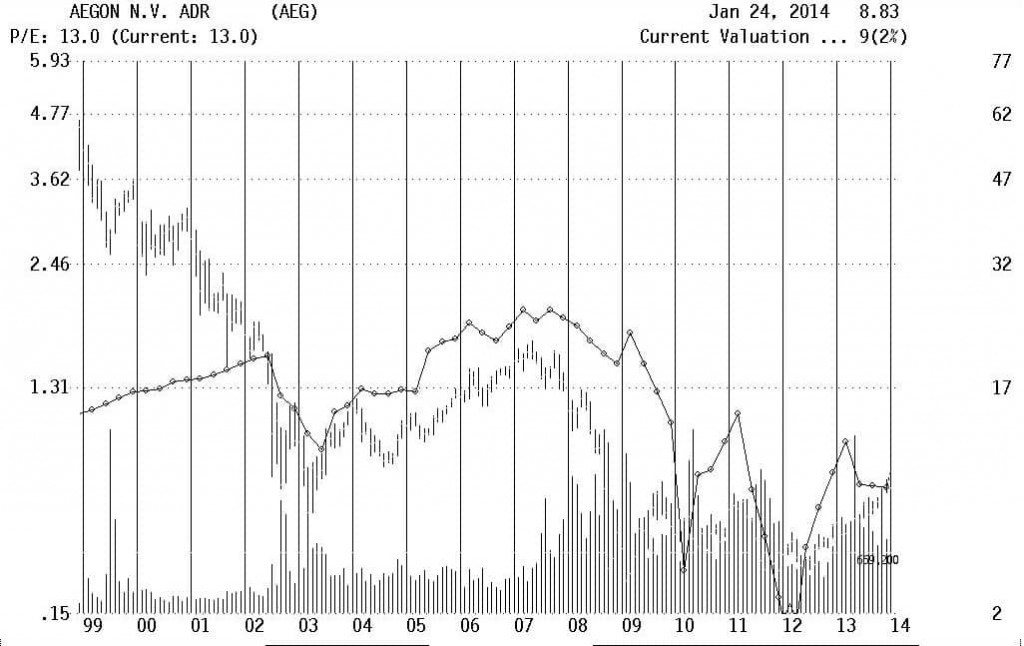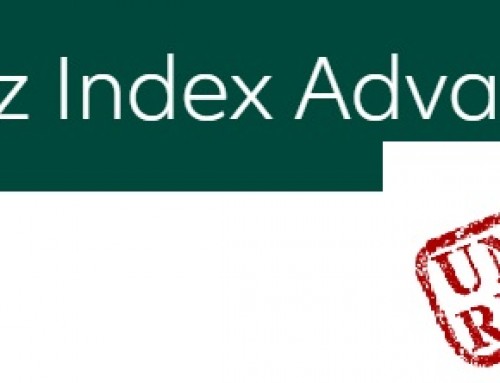Warning: this is an in-depth review of the Transamerica Variable Annuities series. Many annuity critics point to complexity as being a major negative for this asset class and Transamerica doesn't dispel this criticism. The prospectus totals a massive 480 pages which is longer than any of the first three Harry Potter books. So buckle up and let's dig in.
The annuity business has grown in popularity as investors, especially those nearing retirement, look for options to protect themselves from stock market volatility and give them a decent income stream in retirement. With over $200 billion in annual sales, the annuity industry is big business with lots of salesmen trying to persuade you to make a purchase.
You will often hear that annuities are sold, not bought. This is exactly why I will go in depth into some of the most popular annuities because there is shockingly little information available about annuities. Most of the information comes from the companies that sell the annuities and they gloss over the fees, risks and downsides. More importantly, annuities have grown into extremely complex instruments which even the most seasoned professional may have trouble deciphering. My philosophy with any investment is to never invest in anything that you don’t understand and with a prospectus of a staggering 480 pages, this Transamerica Variable Annuity isn't for the average Joe. I don't know anyone that wants to read a prospectus that long.
It is of the utmost importance to make an informed decision. I have dealt with too many clients that have come to me asking for help getting out of an annuity and I can’t help after the fact. Stiff surrender penalties can’t be avoided for many years after you sign on the dotted line.
A Perspective That You Can Trust
I am writing this blog from the perspective of a curious analyst. I am totally impartial as I am a fee-only registered investment advisor. I hope to bring a unique perspective to this topic drawing on my years of experience analyzing companies as a research analyst. I’ve met with hundreds of company CEOs and CFOs and I will use my analytical skills to break down these complex instruments into something easier to understand.
While many investment professionals hate annuities, I do not believe that they are all bad and some of them can make sense as a small part of your investment portfolio. Annuities should never, I repeat never, be the large majority of your portfolio because of their lack of liquidity which is one of their biggest drawbacks.
Issuer Review: Transamerica and AEGON
It is important to look at the issuer of the annuity first because annuities are NOT a guaranteed investment of any sort. This is important to note so I will say it one more time. Annuities are NOT guaranteed. They are only backed by the ability of the issuing insurance company’s ability to pay. Therefore if the issuer goes bankrupt, you are at risk of losing everything! On the first page of the prospectus, it states clearly (at the bottom of the page) “Not insured by FDIC or any federal governmental agency,” “May lose value,” and “Not a deposit of or guaranteed by any bank, bank affiliate, or credit union.”

Transamerica is a subsidiary of AEGON, a Dutch holding company that is a provider of life insurance, pension and asset management. AEGON USA Group currently receives a AA- rating from Standard & Poors. Its strengths include: strong brand recognition, very strong capital adequacy and liquidity, and a very diversified competitive position in the US. Its weaknesses include: operating earnings volatility resulting from market-sensitive product guarantees, diminished earnings stemming from tightening spreads and exposure to investment risk.
While S&P has a stable outlook on AEGON USA Group, it could lower the ratings if, all other things being equal:
- Capital adequacy falls below ‘AA' levels, which could result from further falls in long-term interest rates or significant investment related losses;
- fixed charge cover ratios fall to less than 3x;
- financial leverage materially exceeds 25%;
- or Net cash flows to the holding company fall to less than 1 billion Euros.
AEGON NV is trading 83% below its historic peak in 1999 and 57% below its 2007 high. It is forecast to earn 77 cents in 2013 which is on par with its earnings level of 1996. Check out the chart of AEGON's price and earnings. Not a very consistent company or chart pattern that is attractive.

Annuity Review: Transamerica X-Shares Variable Annuity with Retirement Income Max Rider
Maximum age for initial purchase: 89
Minimum initial premium: $1,000 (Qualified), $5,000 (Non-qualified)
Transamerica stated fees: 1.5% (Policy Value Death Benefit); 1.65% (Return of Premium Death Benefit), 1.85% (Annual Step-Up Death Benefit); up to 0.30% annualized fund facilitation fee; varying investment management fees (depends on funds chosen by participant)
Retirement Income Max Rider: 1.25%
True all in fee with Retirement Income Max Rider: 3.57-4.99%
Website: http://www.transamerica.com/individual/products/annuities/variable-annuity/x-share/tab/1
Prospectus:
A quick note, the prospectus for this variable annuity is an exhaustive 480 pages. Yes, this is longer (and far less entertaining) than any of the first three Harry Potter books. It made last month's read of Prudential's Defined Income Variable Annuity (just 116 pages) look like a walk in the park. This is not a simple product and has lots of fine print. Unfortunately, it was written by lawyers for the benefit of the issuing company, not for the clarity and understanding of the buyer. If you are considering investing thousands or hundreds of thousands of dollars, don’t you think you need to know exactly what you are getting into? Lucky for you, I did the heavy lifting for you and will give the highlights.
High Fees!
The huge knock on variable annuities is the high fees that are associated with annuities and this one is no different. It is no surprise that the fee structure is also complex.
Transamerica charges 1.5% annually plus optional separate account expenses of 0.15% for the return of premium death benefit and 0.35% for the annual step-up death benefit. There is also a 0.3% fund facilitation fee. These are the base fees. The Retirement Income Max Rider adds another 1.25%.
In addition, the underlying mutual fund fees added between 0.54-1.59% in 2012. This is in addition to the Transamerica fee but they likely won’t mention it at all.
Therefore the True annual fees with the Retirement Income Max Rider is 3.57-4.99%. These high fees will eat into any potential investment returns.
Beware of Surrender Fees
Surrender charges are flat out nasty as is typical with most annuities. In the X-Shares, Transamerica locks you in for at least 9 years. If you need the money within the first year, you are hit with a 9% penalty. This reduces by 1% per year until you can finally take your money out without penalty in year 10! I believe this is the worst feature of annuities. These are huge lockup fees and if you need the money, they sock it to you. This is why annuities should NEVER be a significant part of your investment portfolio because they are essentially illiquid for the first 9 years. Unless you are positive you will not need access to these funds, then annuities are NOT for you.
The Transamerica pitch as per their brochure
The Transamerica Variable Annuity combines investment options, protection benefits, income guarantees and tax advantages. On the investment side, they highlight professional money managers, participation in the growth potential of the stock and bond markets, fixed account options and flexibility to transfer among investment options. In terms of protection benefits, variable annuities offer important insurance benefits through the policy or the purchase of additional riders which equal more fees. Income guarantees are also possible through the additional layering of riders or through annuitization.
Most salespeople will likely highlight the value of the Retirement Income Max Rider which is a Guaranteed Lifetime Withdraw Benefit (GLWB). The GLWB guarantees a lifetime income for the contract owner no matter how long they live or what the market does. Salesmen will focus on how low current interest rates are and will emphasize the ability of this rider to guarantee a higher income. However, don’t let any salesman try to overpromise and under deliver. Many agents misrepresent how this annuity and rider will actually perform over the life of the policy. Many will highlight that the withdrawal base grows at an annual 5% compounded rate and they may lead you to believe that this is the actual expected return. Sorry but this isn’t the case. When you choose this rider, your investment options are limited to investments which are either bond funds or balanced funds. If your agent pitches you on big investment returns which are on par with the huge equity returns of 2013, then I highly suggest changing agents and at the very least seeking a second or third opinion immediately. And please don't put any money into the TA AEGON money market which has returned 0% for 3 years with a management fee of 0.67%. Yikes!
If you have additional questions about this section, please submit a question using our secure form. We will answer your questions within 24 hours via email. No strings attached, just a little free help to point you in the right direction.
Who should buy this product?
In summary, this product only makes sense for an extremely conservative investor who is looking for guaranteed income with no market risk. If you are happy with low investment returns and a guaranteed income stream, then this product may be acceptable for you. Be sure to evaluate how it fits into your entire investment strategy and how it will help you reach your financial goals. If you like this annuity, then I’d suggest comparing it to other fixed income variable annuities with GLWB to see how the income streams and fees stack up. At the very least, choose a different Transamerica Share class that has either no surrender period or a shorter one. The X-Shares 9 year surrender period is excessive.
In the end, not very many of us should be investing in this annuity. Why? For one, the high fees are eating into your returns. With a true fee of up to 4.99%, it makes most mutual funds actually look inexpensive! This annuity is similar to all variable annuities, meaning high costs and quite possibly inferior returns. Secondly, for those seeking any growth, this annuity isn’t likely to produce much better than single-digit returns and I would argue that you may see no growth if you choose only bond funds. Because interest rates are still near historic lows and the investment options are skewed to fixed income assets, the portfolio could actually suffer losses. Please read my previous blog post “Are your bond assets safe in a rising rate environment?” for more information on bond risk.
If you think this annuity is right for you, then definitely read the 480 page prospectus from cover to cover. Because you should never invest in something that you don’t fully understand.
Thanks for sticking with me on this incredibly long blog post. I hope you are able to make a more informed investment decision. Please don’t let your agent pressure you into a sale before you have made an informed decision. Since annuities lock you into a long-term contract with stiff surrender fees, please be sure to take your time to make the best possible decision for you and your family.
Have questions about this Annuity?
If you're considering this annuity and have additional questions, feel free to reach out. You can contact us via our secure contact form. We will answer your questions within 24 hours via email. No strings attached, just a little free help to point you in the right direction.
Have you purchased this annuity or are you doing your due diligence? Please share your experience in the comments section below.
“Annuities stock photo” by lendingmemo_com is licensed under CC BY 2.0






